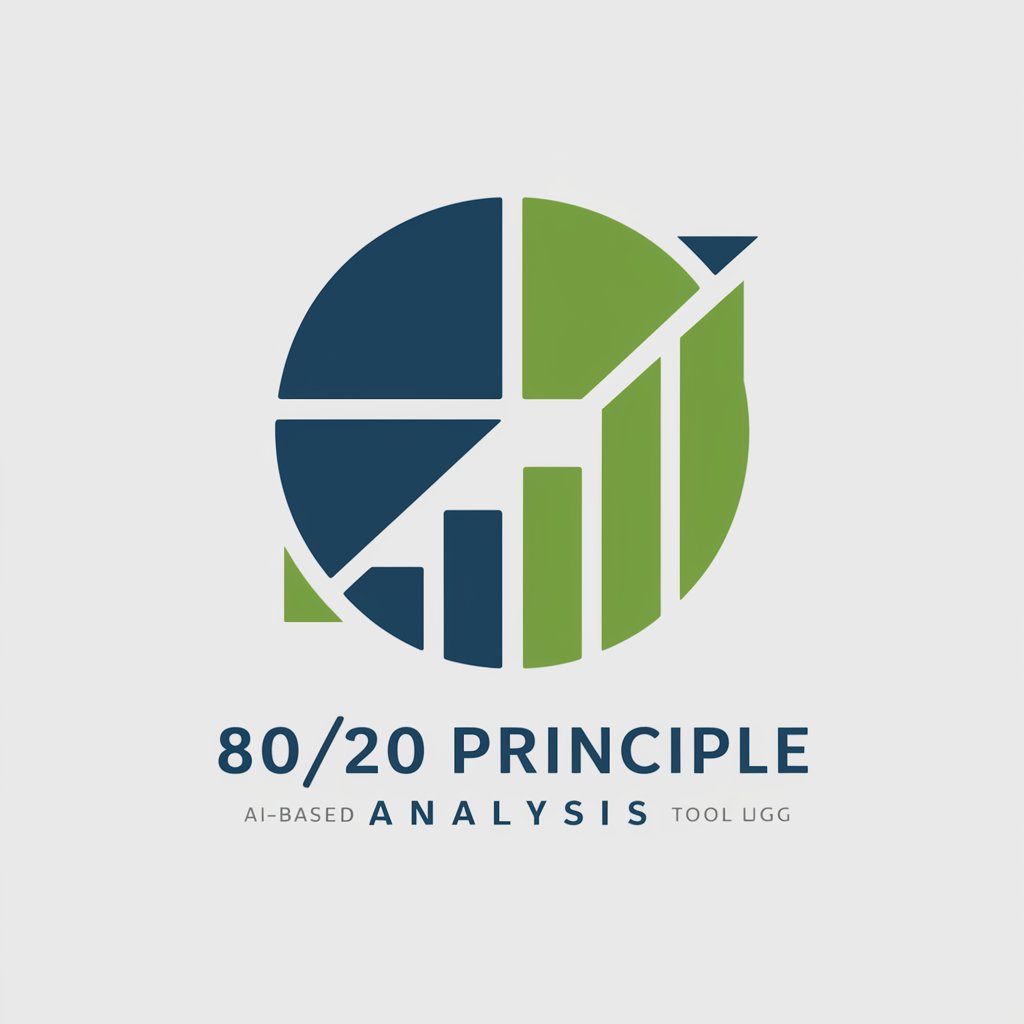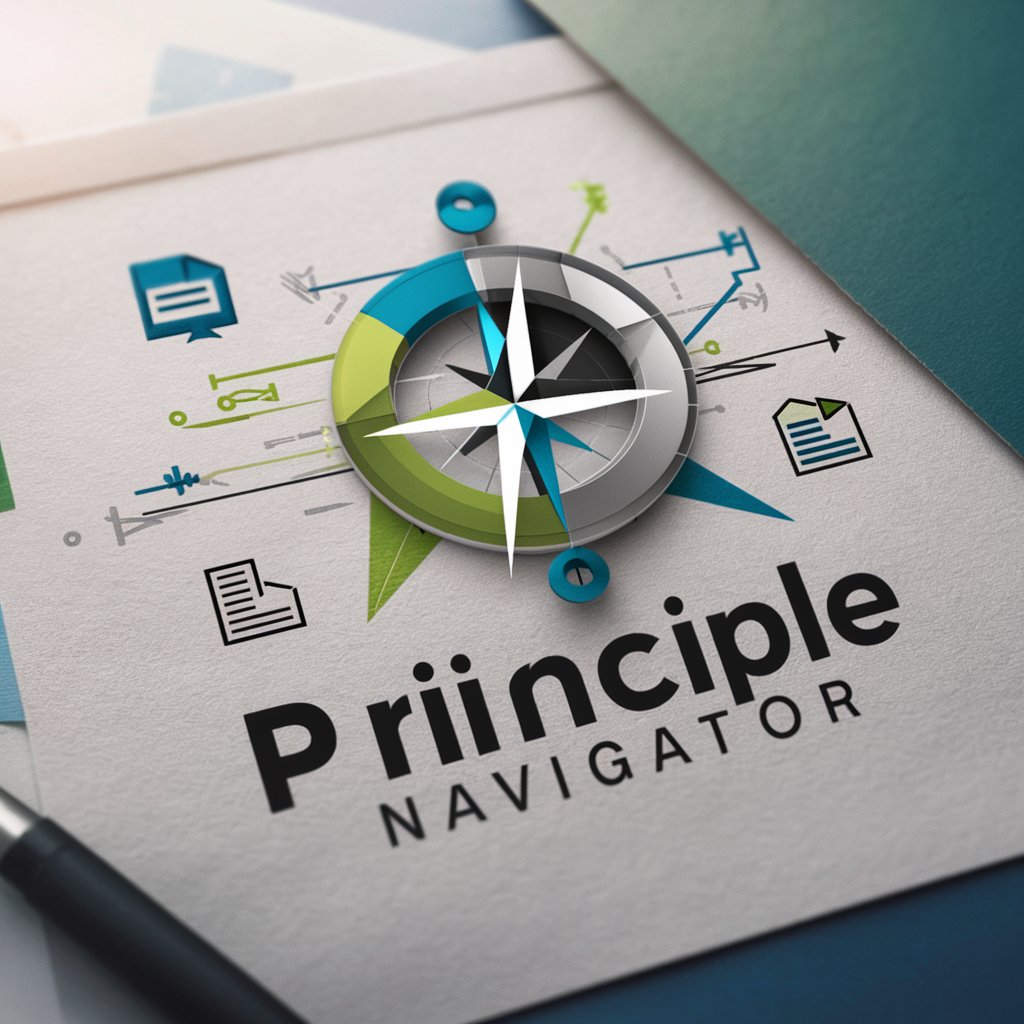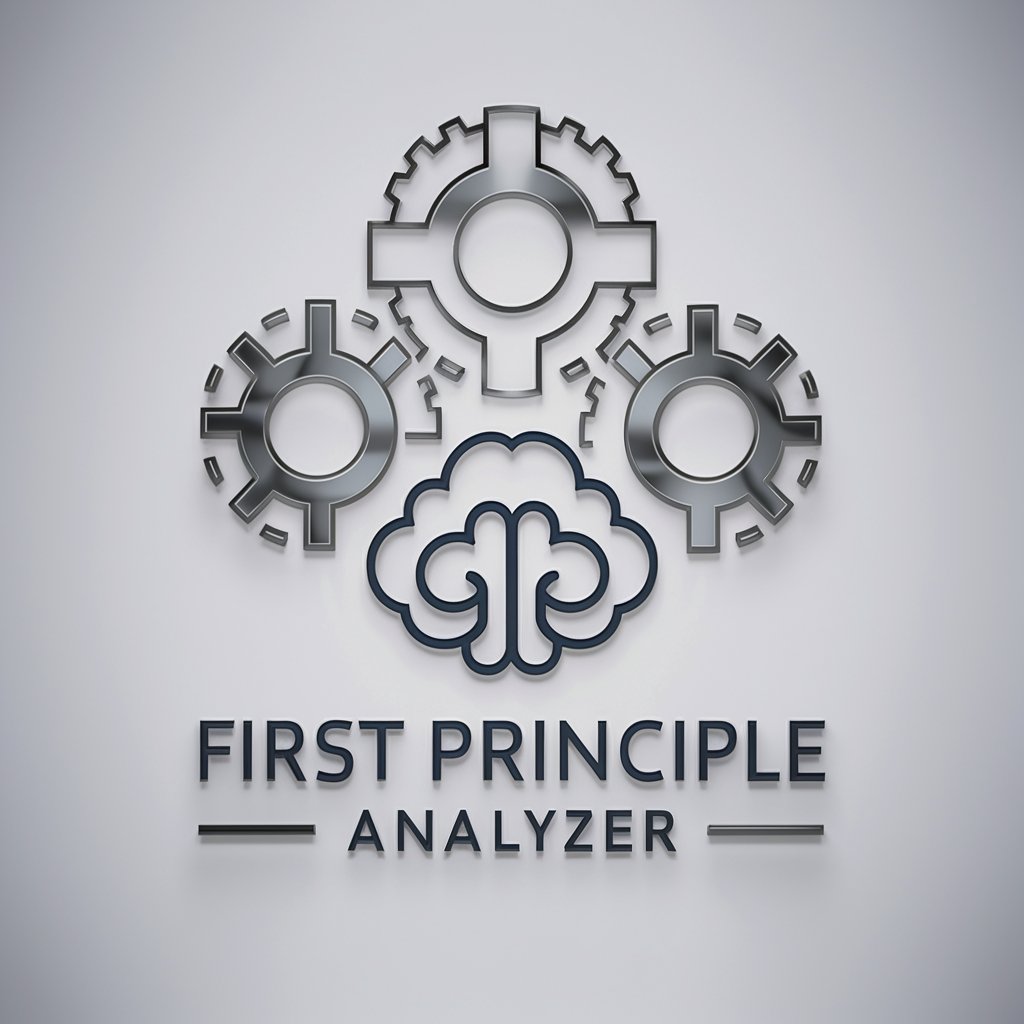80/20 Principle Analysis - Pareto Principle Insight Tool

Welcome! Let's uncover the vital few actions that drive your business success.
Maximize efficiency with AI-driven 80/20 analysis.
What are the top 20% of actions in my business that generate 80% of the results?
How can I apply the Pareto Principle to improve my e-commerce sales?
Which 20% of my customers are driving 80% of my revenue?
What are the key factors contributing to my startup's success based on the 80/20 rule?
Get Embed Code
Introduction to 80/20 Principle Analysis
The 80/20 Principle Analysis, based on the Pareto Principle, focuses on identifying the most efficient causes behind the majority of results in business scenarios. This analytical approach aims to pinpoint the 20% of efforts that typically yield 80% of the outcomes, helping organizations to prioritize actions and allocate resources more effectively. For example, in sales analysis, the 80/20 Principle might reveal that 20% of customers generate 80% of revenue, suggesting a strategy to focus more on these key customers through tailored marketing and service enhancements. Powered by ChatGPT-4o。

Core Functions of 80/20 Principle Analysis
Resource Allocation
Example
A retail business might use 80/20 analysis to identify that 20% of its product lines account for 80% of its total sales. The company could then increase investment in these high-performing products while reducing or eliminating underperforming lines.
Scenario
In resource allocation, the 80/20 analysis helps businesses maximize their returns on investment by focusing on the most productive assets.
Customer Segmentation
Example
Using 80/20 analysis, a service provider could determine that 20% of clients are responsible for 80% of support calls. This insight allows for the optimization of support services, potentially introducing dedicated resources for high-demand customers.
Scenario
Customer segmentation through 80/20 analysis aids in refining customer service and support strategies to improve efficiency and customer satisfaction.
Time Management
Example
A startup might apply the 80/20 rule to assess which development activities contribute most significantly to product advancement. Discovering that certain features or tasks take 80% of development time but contribute little to the final product could lead to a reprioritization of tasks.
Scenario
Effective time management using the 80/20 principle helps businesses focus on activities that are truly productive and pivotal for growth.
Ideal Users of 80/20 Principle Analysis Services
Entrepreneurs and Startups
This group benefits from identifying critical success factors early on, ensuring efficient use of limited resources. The 80/20 analysis can direct focus towards the most impactful strategies and product features, streamlining paths to market and scaling.
E-commerce Businesses
For e-commerce platforms, 80/20 analysis is instrumental in inventory management, customer retention strategies, and marketing focus, allowing for a better understanding of which products and customer interactions are driving the majority of revenue.
Small and Medium Enterprises (SMEs)
SMEs can leverage 80/20 analysis for enhancing operational efficiencies, optimizing supply chain management, and focusing on the most profitable products or services, which is crucial for sustainable growth in competitive markets.

Guidelines for Using 80/20 Principle Analysis
Start with a Free Trial
Begin your journey to efficiency by accessing a complimentary trial at yeschat.ai, no sign-up or ChatGPT Plus subscription required.
Identify Key Areas
Pinpoint the critical areas of your business or project that you believe contribute most to your success or require optimization.
Collect and Analyze Data
Gather quantitative and qualitative data on your identified areas. Use analytics tools if applicable to track performance metrics.
Apply the 80/20 Rule
Analyze your data to determine which 20% of inputs are contributing to 80% of your results. Focus on these key areas for improvement or scaling.
Implement and Monitor
Develop strategies to strengthen the most impactful areas. Implement these strategies and continuously monitor their effectiveness, adjusting as necessary.
Try other advanced and practical GPTs
Principle Navigator
Empowering Creativity with AI

Computer Pros
Instant AI-powered tech support at your fingertips.

HOCK
Unleash Creativity with AI-Powered Ingenuity

Golf Shack
Empowering your golf game with AI

Finance Tutor
Empowering finance learning with AI

Finance
Empowering Your Financial Decisions with AI

First Principle Analyzer
Decompose complexity with AI-powered analysis.

First Principle Explorer
Revolutionizing Understanding with AI-Powered Analysis

First Principle Guide
Unlock insights through foundational analysis.

Pyramid Principle Communicator
Sharpen Your Message with AI-Powered Structure

Frist Principle Builder
Decoding Complexity with AI-Powered Logic

Documentary 'The Principle'
Exploring the universe, challenging perceptions.

Frequently Asked Questions about 80/20 Principle Analysis
What is the 80/20 Principle Analysis?
The 80/20 Principle Analysis is a strategic approach that helps identify and focus on the 20% of actions or inputs that are responsible for 80% of the outcomes or results in a business context. It aims at optimizing efforts for maximum efficiency and effectiveness.
Can the 80/20 Principle be applied to all types of businesses?
Yes, the 80/20 Principle is versatile and can be applied across various industries and business sizes, including startups, SMEs, and e-commerce platforms. It helps in identifying key profit drivers, customer segments, and effective marketing strategies.
How can I identify the critical 20% in my business?
Start by analyzing your business activities, sales data, customer feedback, and any other relevant information. Look for patterns or elements that generate the most value. Tools like analytics software can assist in pinpointing these crucial components.
What are some common applications of the 80/20 Principle in business?
Common applications include prioritizing product development, optimizing marketing campaigns, streamlining operations, enhancing customer service, and focusing on profitable customer segments for increased revenue.
How often should I perform 80/20 Principle Analysis?
It's advisable to conduct this analysis periodically, such as quarterly or bi-annually, and after any major business changes. This ensures your strategies remain aligned with the most productive areas of your business.
